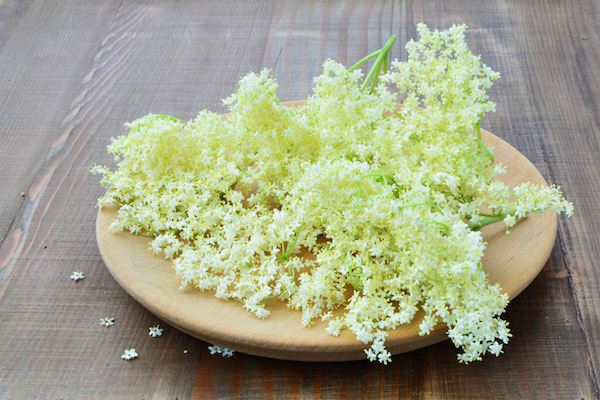
MONDAY, Sept. 30 (HealthDay News) — New research confirms what experts have suspected: The decision not to vaccinate children for nonmedical reasons can have far-reaching effects, including raising the risk of infections for other children and their families.
Researchers compared areas with significant numbers of parents who chose not to vaccinate their children for nonmedical reasons to areas that were affected by the 2010 whooping cough outbreak in California. They found that people living in areas with high nonmedical vaccine exemption rates were 2.5 times more likely to also be located in an area with high levels of whooping cough.
“Not vaccinating your child is not a benign decision. It has real health consequences to the individual child and to the community,” explained study senior author Saad Omer, an associate professor of global health, epidemiology and pediatrics at Emory University in Atlanta.
Results of the study were published online Sept. 30 and will appear in the October print edition of the journal Pediatrics.
Whooping cough, also known as pertussis, is a highly contagious bacterial disease that attacks the respiratory system. Last year, the United States had the highest number of whooping cough cases since 1955, according to the U.S. Centers for Disease Control and Prevention. During 2012, the CDC received reports of 48,000 cases and 18 deaths, with most of the deaths occurring in infants.
Part of the reason there’s been a resurgence in whooping cough is that the newer vaccine, which causes far fewer side effects than the old vaccine, doesn’t work for as long as the older vaccine did, the researchers explained. Because of this, it’s crucial that children receive vaccines and booster doses on schedule. If there’s a delay in vaccination, the risk of whooping cough goes up.
In 2010, 9,120 cases of whooping cough, with 10 deaths, were reported in California. That was the highest number of whooping cough cases in that state since 1947, according to background information in the study. Factors that may have played a role in this outbreak include the waning immunity associated with the newer vaccine, better diagnosis techniques and the cyclical nature of whooping cough.
But, the researchers also wanted to see if the clustering of people who had nonmedical exemptions for vaccines played a role in the outbreak. Omer said that previous research has shown that there do tend to be clusters of people with nonmedical vaccine exemptions.
In California, the rate of such exemptions has risen from 0.77 percent in 2000 to 2.33 percent in 2010, according to the study. Still, the state has relatively high vaccination rates. Almost 91 percent of children entering kindergarten in 2010 had received all the required immunizations, the study authors pointed out.
Omer and his team reviewed data on vaccine exemptions from school data, and they geographically coded that information to the census tract level. They then did the same thing with data on whooping cough cases.
The investigators found 39 clusters for high nonmedical exemption rates and two statistically significant clusters of whooping cough cases. Census tracts within a high nonmedical exemption cluster were 2.5 times more likely to be in a whooping cough cluster than areas without high exemption rates.
The risk of whooping cough was 20 percent higher inside a vaccine exemption cluster than outside of one, according to the study.
In California, whooping cough clusters and nonmedical exemption clusters were associated with a lower population density, lower average family size, fewer minorities, higher percentage of high school graduates, higher average household incomes and a lower percentage of families living in poverty, the study found.
“There was some nice analysis from the CDC years ago that people who refuse vaccines tend to be higher in socioeconomic status,” added Omer.
An expert not involved with the study agreed with that analysis.
“The irony is that normally people with lower socioeconomic status have an increased risk of infectious diseases, but with vaccine-preventable infectious diseases, the risk is higher for those higher in socioeconomic status,” noted Dr. Kenneth Bromberg, director of The Vaccine Research Center and chairman of pediatrics at The Brooklyn Hospital Center in New York City.
Some who seek these exemptions argue that it’s a personal decision that only they can make for their family. But, Omer and Bromberg both expressed concern because the decision not to vaccinate is likely putting others at risk for infection.
“We live in a free society, but infectious diseases are different from other phenomenon. Someone else’s behavior can affect my child or loved one, or me,” noted Omer.
“If a parent gets their child vaccinated and that particular vaccine has an 80 percent efficacy rate, that means that even if you don’t account for waning protection after vaccination, there’s still a one-in-five chance that child can be at risk of being infected. But, the odds are lower if everyone in the community is vaccinated,” Omer explained.
“It’s personal freedom versus public health,” Bromberg said. “We can’t always do everything we want in a society. And the issue is more complicated than what was addressed in this article. There are immune-compromised people, and people who receive their vaccines as recommended. By not getting vaccinated, they’re putting immune-compromised people at an even greater risk and putting normally healthy people at risk, too,” said Bromberg.
More information
Learn more about whooping cough from the U.S. Centers for Disease Control and Prevention.
Copyright © 2025 HealthDay. All rights reserved.

